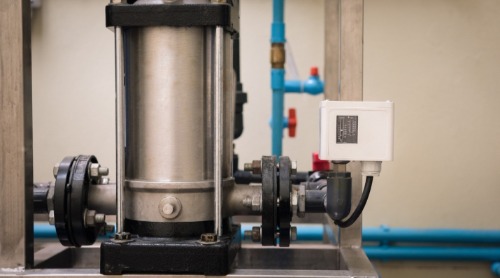Differential Pressure Switches: What You Need to Know
 Differential pressure switches are ideal for air filter monitoring, static pressure proving, airflow proving, or auxiliary fan actuation. These devices use differential air pressure between two points to operate an electrical switch at a preset actuation point. The electric switch may either start or stop fans, open or close dampers/shutters, light a warning, set off audible alarms, etc. Differential pressure switches can be integral parts of a complex control system overall.
Differential pressure switches are ideal for air filter monitoring, static pressure proving, airflow proving, or auxiliary fan actuation. These devices use differential air pressure between two points to operate an electrical switch at a preset actuation point. The electric switch may either start or stop fans, open or close dampers/shutters, light a warning, set off audible alarms, etc. Differential pressure switches can be integral parts of a complex control system overall.This blog covers the basics of differential switches, how they work, where they are most commonly applied, and more.
Differential Pressure Switches 101
A differential pressure switch is an electromechanical device that is used for sensing a difference in pressure between two points. These points could be two positive or two negative pressures, one of each, one positive and one atmospheric pressure, or one negative and one atmospheric pressure.
There are three essential elements in the switch that are used in various combinations to manufacture hundreds of variants to suit specific industrial applications. Those elements are:
1. Sensing elements made either of bellows or diaphragm
2. A stable spring to determine the range set point
3. A snap-action micro-switch
In general, differential pressure switches are used in HVAC, plants, or complex systems for control purposes, however, there are several specific applications where these devices are implemented.
How do Differential Pressure Switches work?
When connected to two pressure sources, the differential pressure switch can be used as an alarm to make or break a circuit as the pressure rises or falls beyond the preset actuation point.
When a change in differential pressure occurs between the two sides of the device's internal diaphragm — the diaphragm moves, transmitting a force to a pressure switch. Some models employ methods of transmitting diaphragm movement to a power switch button.
Diaphragm movement is resisted by a calibrated spring. This spring determines the differential pressure range within which movement of the diaphragm will trigger the electrical switch. The actuation point is set by adjusting the spring compression or tension. This can be a factory preset or even field adjustable.
Some of the more common applications for differential pressure switches include:
• Air proving
• Fans
• Ventilation flow
• Air filter health/status
• Exhaust ducts
• Cleaning and purification
• Dirt and dust filter loading
• Combustion exhaust venting
• Exhaust/stack gas
• Exhaust/stack airflow blockage
• Air conditioners
• Heating/venting blower fan
• Gas pressure
In general, differential pressure switches tend to be used for energy-saving or preventative maintenance.
Should you use a Differential Pressure Switch in your facility?
There’s an obvious attraction to using a differential pressure switch as they are most often used in systems that require high levels of functional safety. They’re built sturdy, housed mostly in a steel casing, and feature a threaded fitting — making them easy to fit pipes and tanks. They are often available in weatherproof and explosion-proof configurations, are primarily designed for integration into manufacturing environments, and are linked to programmable logic controllers (PLCs).
If your facility is in need of a control system that implements differential pressure systems our product experts are on hand to help you make the right choice for your application. Reach out today to learn more about the innovative process control products we offer — all supported by exceptional customer service.

